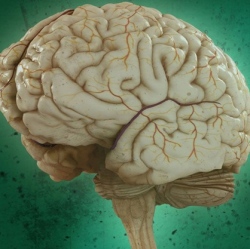
A small, poorly understood segment of the population stays mentally healthy from age 11 to 38, a new study finds. Everyone else encounters either temporary or long-lasting mental disorders. Only 171 of 988 participants, or 17 percent, experienced no anxiety disorders, depression or other mental ailments from late childhood to middle age, researchers report.
Of the rest, half experienced a transient mental disorder, typically just a single bout of depression, anxiety or substance abuse by middle age.
“For many, an episode of mental disorder is like influenza, bronchitis, kidney stones, a broken bone or other highly prevalent conditions,” says study coauthor Jonathan Schaefer, a psychologist at Duke University. “Sufferers experience impaired functioning, many seek medical care, but most recover.”
The remaining 408 individuals (41 percent) experienced one or more mental disorders that lasted several years or more. Their diagnoses included more severe conditions such as bipolar and psychotic disorders.
Researchers analyzed data for individuals born between April 1972 and March 1973 in Dunedin, New Zealand. Each participant’s general health and behavior were assessed 13 times from birth to age 38. Eight mental health assessments occurred from age 11 to 38.
Surprisingly, those who experienced lasting mental health did not display several characteristics previously linked to a lower likelihood of developing mental disorders. Those attributes consist of growing up in unusually affluent families, enjoying especially sound physical health and scoring exceptionally high on intelligence tests.
Instead, mentally healthy participants tended to possess advantageous personality traits starting in childhood, Schaefer and colleagues found. These participants rarely expressed strongly negative emotions, had lots of friends and displayed superior self-control. Kiwis with rock-solid mental health also had fewer first- and second-degree relatives with mental disorders compared with their peers.
As adults, participants with enduring mental health reported, on average, more education, better jobs, higher-quality relationships and more satisfaction with their lives than their peers did. But lasting mental health doesn’t guarantee an exceptional sense of well-being, Schaefer says. Nearly one-quarter of never-diagnosed individuals scored below the entire sample’s average score for life satisfaction.
Less surprising was the 83 percent overall prevalence rate for mental disorders. That coincides with recent estimates from four other long-term projects. In those investigations — two in the United States, one in Switzerland and another in New Zealand — between 61 percent and 85 percent of participants developed mental disorders over 12- to 30-year spans.
Comparably high rates of emotional disorders were reported in 1962 for randomly selected Manhattan residents. Many researchers doubted those findings, which relied on a diagnostic system that was less strict than the three versions of psychiatry’s diagnostic manual that were introduced and used to evaluate New Zealand participants as they got older, says psychiatric epidemiologist William Eaton of Johns Hopkins Bloomberg School of Public Health. But the Manhattan study appears to have been on the right track, Eaton says.
Increased awareness that most people will eventually develop a mental disorder (SN: 10/10/09, p. 5), at least briefly, can reduce stigma attached to these conditions (SN Online: 10/13/16), he suspects.
Psychiatric epidemiologist Ronald Kessler suspects the numbers of people experiencing a mental disorder may be even higher than reported. Many participants deemed to have enduring mental health likely developed brief mental disorders that got overlooked, such as a couple of weeks of serious depression after a romantic breakup, says Kessler of Harvard Medical School, who directs U.S. surveys of mental disorders.
Rather than focusing on rare cases of lasting mental health, “the more interesting thing is to compare people with persistent mental illness to those with temporary disorders,” he says.
